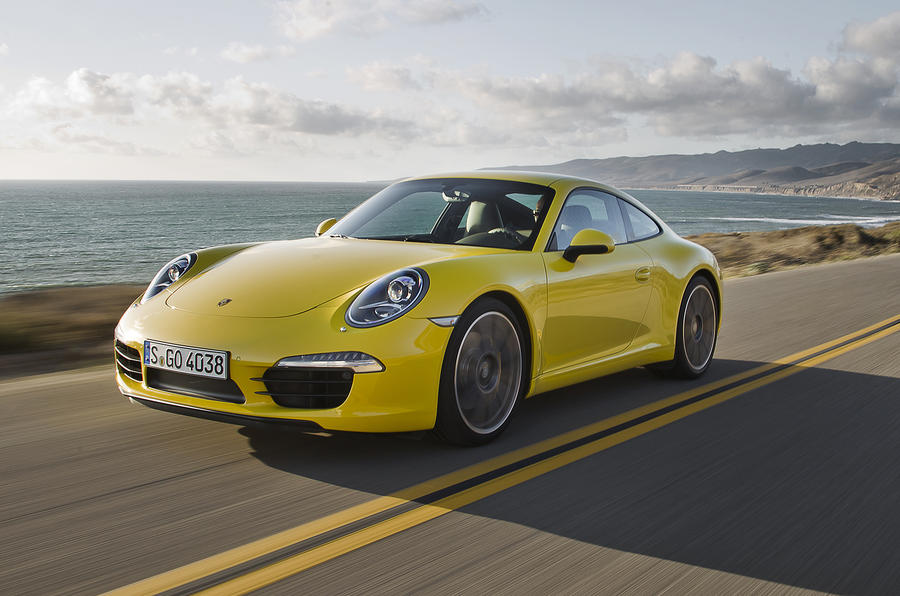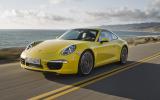What is it?
The new Porsche 911 Carrera S operates on a much higher performance plane than the seven-year-old model it replaces. With a 0-62mph time of 4.3sec and a top speed of 188mph, the new model storms up the strip 0.2sec faster and extends 2mph beyond the old Carrera S when running an updated version of the seven-speed PDK gearbox.
So, the new 911 is faster than any of its illustrious forebears by some margin. But the question is, can it achieve such feats with the same intensely involving character as the previous six generations of the car?
Make no mistake, the 991 represents the most significant shift in emphasis for the rear-engined coupé ever – more significant than the progression from the air cooled 993 to the water cooled 996 back in 1996.
Seeing the new car reinforces the impression of Porsche’s revolutionary approach. Haunches widened to accommodate all new underpinnings make the styling significantly more curvaceous and terrific attention to detail endows it with greater precision of build. Its stance is more aggressive, too.
It is 56mm longer and, owing to a flatter roof, 11mm lower than the outgoing 997. The really telling measurement, though, is its wheelbase, which for only the second time in the history of the 911 has been extended, by a considerable 100mm. This serves to shorten up the overhangs, providing an increase in interior accommodation.
The Carrera S as driven here is claimed to come in at 1415kg with its optional PDK gearbox – some 40kg under the kerb weight of its predecessor.
What’s it like
Inside, there’s a new dashboard, a high-set centre and contemporary looking switchgear. It’s a classy, modern driving environment but it’s not devoid of classic touches.
The first thing that hits you as you set off is the all round improvement in refinement. Never lacking in this area, it is now considerably quieter than before, with less buffeting around the door mirrors, lower levels of mechanical noise from the rear and, despite those 20-inch tyres, less tyre roar.
Cruising at a steady 80mph in the tall seventh gear, the 911 feels remarkably relaxed. The reworked suspension absorbs transverse joints in the road surface and copes with potholes with greater aplomb than before. With the Porsche Active Stability Management PASM in Normal mode the chassis takes on a new-found calmness. Switching the PASM into Sport instantly heightens the responses – not only in terms of damping firmness but the directness of the steering and sensitivity of the throttle, too.
But there is still less initial impact harshness than with the previous 911, something that makes Sport mode more suitable over a wider range of road surfaces, and body movements are wonderfully controlled.
A big surprise are the unfamiliarly subtle messages – or is the lack of them – being relayed back from the newly designed steering wheel. Over the years we’ve become accustomed to the joggling inherent in all 911s up until now. Anyone who has driven one will know what I mean. This inherent on centre movement of the steering wheel at the straight ahead, a measure of liveliness and feedback many consider part and parceled of the driving experience, has been eliminated entirely through the adoption of a new electro-mechanical steering system.
















Join the debate
Add your comment
Re: Porsche 911 Carrera S
I am with you on this p j t. I had a 3.2 Carrera for a while in the 90's and a 996 for a couple of years about 10 years ago. The new one was very easy to live with as a day to day car and madam would drive it whereas the 3.2 seemed so small and agile that, along with the fabulous sound it made and the feircer clutch and the pure unassisted steering meant you felt your realy ahd to drive it. Nice to see that the latest one is lighter but it has grown, yet again.
Re: Porsche 911 Carrera S
Having owned 4 models of the 80s era,have just driven a 911 of 2007 vintage,what have they done to the steering! It is nothing like my old 1985 3.2, its so remote, no feel of contact with the road.You could pinpoint a corner to the nearest point ,and wham open the throttle,and the courage, that you would get that car round it .As you guessed, I am a fan of the 3.2 brigade,the best Porshe that was made.I suppose that with aircooled,etc,it was as far as they could go.I know full well this is an old argument.I am aproaching retirement, and would only consider an older model, just for enjoyment of driving, after all this supposed to be a drivers car isnt it?
Re: Porsche 911 Carrera S